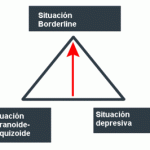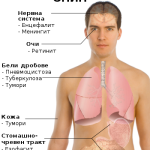Mental health articles
OF mental health care and mentally ill
Epidemiology and Demographics of Conversion Disorder
Epidemiology and Demographics of Conversion Disorder
Because of the almost ephemeral nature of conversion and the differences in defining the term, the reported prevalence of conversion disorder fluctuates from rareto ubiquitous. Prevalence rates for conversion vary as a function of clinical setting. Guze et al. found that 24% of 500 psychiatric outpatients had a history of conversion symptoms. Engel estimated that 20 to 25% of patients admitted to general medical services will experience a conversion symptom at one time or another; however, Engel’s estimate was not empirically based. Empirical investigations resulted in more likely estimates of conversion that suggest that the prevalence is between 5 and 14% of all consultations in a general medical setting.
DSM-IV notes the prevalence of conversion disorder at 1–3% of outpatient referrals. The use of such different diagnostic terms as conversion and hysteria have surely confounded efforts to determine accurate prevalence estimates across different samples. The distribution of conversion in men and women is equivocal. It is generally believed that conversion symptoms occur more frequently in women. Engel reported that conversion symptoms occur two or three times more frequently in women than in men. The DSM-IV (APA, 1994) reports a 2:1 to 10:1 ratio in favor of women. The typical patient with conversion reaction has been described as a woman less than 40 years old from a rural and/or impoverished environment. On the other hand, Chodoff contended that conversion reactions occur as frequently in men as women. In fact, men experience conversion more frequently than women in such settings as industry and the military. Ziegler, Imboden, and Rogers commented that women may use conversion symptoms more than men because the feminine role inherently sanctions greater dependency and reliance on others, and more readily lends itself to a ‘‘sick role.’’ Probably there is little sex difference in the prevalence of conversion. Differences reported in studies may reflect social and cultural influences on the expression and diagnosis of conversion instead of true sex differences. The onset of conversion disorder is usually from late childhood to early adulthood (APA, 1994). The onset is typically acute and tends to resolve quickly, usually within 2 weeks. Factors associated with a good prognosis include acute onset, identifiable stress before hospitalization, and good premorbid functioning. There has been considerable interest in examining conversion disorder in children and adolescents . The prevalence of conversion in children and adolescents has been estimated at approximately 5%.
However, an older study by Robins and O’Neal estimated that the prevalence of conversion reactions is as high as 17%. The presence of a family role model with similar physical symptoms, familial discord, early sexual trauma, and stress has been consistently found in children and adolescents with conversion symptoms. Spierings et al. conducted a 9-year retrospective study of eighty-four children between the ages of 6 and 17 who met DSM-III-R criteria for conversion disorder of various types (paresthesia, anesthesia, pseudoseizure, and loss of consciousness were the most common), and a number of noteworthy findings were revealed. They reported a 2.2:1 gender ratio for females, but below the age of 10 the ratio was even. Sixty-two percent of patients and 45% of family members had a history of significant organic disease. A personal model for the symptoms was observed in 29% of cases, suggesting a learning process.
In general, studies of conversion in children and adolescents are particularly impressive and suggest possible genetic, environmental, and role-model influences in the expression of conversion disorder. In 1896, Freud stated that conversion phenomena were rare in the lower class; however, today the reverse is true.
Conversion reactions are observed more frequently in individuals who reside in rural areas and in less psychologically sophisticated populations. Patients from rural and uneducated backgrounds also tend to present to clinicians with more primitive, bizarre, and dramatic clinical presentations of conversion, whereas more educated and sophisticated patients tend to present with symptoms that more closely simulate physical disease.
Post Footer automatically generated by wp-posturl plugin for wordpress.
More from my site
Tags: conversion, demographics, disorder, epidemiology









Leave a Reply